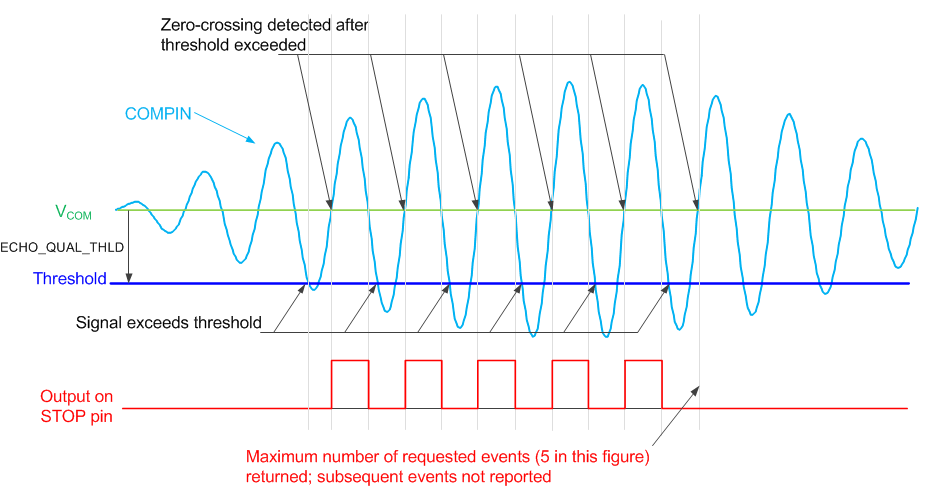SNAS648C October 2014 – February 2023 TDC1000
PRODUCTION DATA
- 1 Features
- 2 Applications
- 3 Description
- 4 Revision History
- 5 Pin Configuration and Functions
- 6 Specifications
- 7 Parameter Measurement Information
-
8 Detailed Description
- 8.1 Overview
- 8.2 Functional Block Diagram
- 8.3 Feature Description
- 8.4 Device Functional Modes
- 8.5 Programming
- 8.6 Register Maps
- 9 Application and Implementation
- 10Device and Documentation Support
- 11Mechanical, Packaging, and Orderable Information
8.4.4.1 Single Echo Receive Mode
Single Echo mode is suitable for concentration measurements and flow metering applications. The device can be configured for Single Echo mode by setting the RECEIVE_MODE bit to 0 in the CONFIG_4 register. In Single Echo mode, the device will generate STOP pulses for every zero-cross qualified by the threshold comparator, up to the number of expected STOP events configured in the NUM_RX field in the CONFIG_1 register.
The threshold comparator qualifies the next zero-cross after an RX amplitude smaller than the programmed threshold voltage is detected. The zero-cross detector will provide output pulses corresponding to the rising edge of the received signal crossing the VCOM level, as shown in #SNAS6486370. The threshold voltage can be set in the ECHO_QUAL_THDL field in the CONFIG_3 register.
 Figure 8-19 Single Echo Receive Mode (5 STOP Events)
Figure 8-19 Single Echo Receive Mode (5 STOP Events)If the number of expected pulses programmed in NUM_RX is not received or the time-of-flight operation times out, the TDC1000 will indicate an error condition in the ERROR_FLAGS register and will set the ERRB pin low.